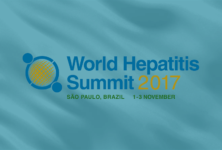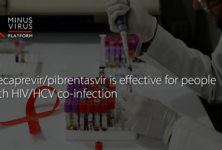A risk score based on routine assessments carried out during antenatal care in resource-limited settings can accurately predict which pregnant and breastfeeding women have an especially high risk of infection with HIV and would therefore benefit from pre-exposure prophylaxis (PrEP), investigators report in the online edition of Clinical Infectious Diseases.
Predictors of infection with HIV included a partner of unknown HIV status, number of lifetime sexual partners, syphilis, bacterial vaginosis and vaginal candidiasis. A composite risk score higher than six was associated with a sixfold increase in HIV incidence; the score was a more accurate predictor of HIV infection than any individual risk factor. Women with risk scores above six accounted for only 16% of the cohort but 56% of HIV infections.
The study involved over 1300 pregnant women in Kenya.
“We found that a composite risk score including male partner, behavioral and clinical characteristics have good predictive ability to identify women most likely to acquire HIV,” write the authors. “Our analysis contributes a unique risk assessment of an important subpopulation and is the first, to our knowledge, that assesses HIV risk during pregnancy and postpartum, a period of high HIV incidence and PrEP implementation opportunities.”
Nearly 80% of all HIV infections involving younger women occur in sub-Saharan Africa and there is a high HIV incidence among younger women and men in this setting.
Pregnancy is a period of biological changes that can increase susceptibility to HIV. It is also a time of behavioural changes – such as reduced condom use – that can increase the risk of exposure to HIV. A systematic review involving over 22,000 African women found HIV incidence rates during pregnancy and postpartum of 3.8 and 4.7 per 100 person-years, respectively. These rates compare to those observed in high-risk populations such as female sex workers.
Prediction tools have been used to identify subgroups most at risk of HIV, including men-who-have-sex-with-men, HIV-serodiscordant African couples and young (non-pregnant) African women. However, no tool has been used to identify which pregnant and postpartum women have an especially high risk of infection with HIV.
Development of such a tool could help identify which women would most benefit from PrEP and help minimise unnecessary use of the therapy.
Investigators from the Mama Salama Study therefore used data from a longitudinal cohort of 1304 pregnant and postpartum women in Kenya to develop a risk score capable of identifying individuals with the greatest risk of infection with HIV during these periods of increased susceptibility.
The study was conducted between 2011 and 2014. Pregnant females aged 14 years and older who were HIV-negative at baseline were eligible for recruitment. Participants were followed for nine months postpartum.
At each follow-up visit, participants were tested for HIV. Questionnaires were also administered on sociodemographic factors, reproductive history, contraception and condom use, medical history and genital symptoms. Patients were also screened for bacterial vaginosis and vaginal thrush.
Data were gathered on incident HIV infections and the authors identified factors associated with this outcome. They used this data to develop risk scores predictive of infection with HIV.
Participants were randomised into two groups: one to develop the risk score (derivation cohort), the other to test the score’s robustness (validation cohort).
Overall, the women contributed 1235 person-years of follow-up during which there were 25 incident HIV infections (incidence rate 2.31 per 100 person-years).
The median age was 22 years. Three-quarters of women were married. Only 7% reported a history of sexually transmitted infections, 55% reported sex without a condom in the previous month and 29% had a partner of unknown HIV status.
There were 14 incident infections in the derivation cohort, a rate of 2.31 per 100 person-years. Increased risk of acquisition of HIV was associated with relationship duration of less than one year, having a male partner of unknown HIV status, lifetime number of sexual partners, syphilis, bacterial vaginosis and vaginal thrush. Characteristics with the highest risk scores were syphilis and having a partner of unknown HIV status.
HIV incidence was 13.6 per 100 person-years among women with a risk score above eight compared to an incidence of 0.9 per 100 person-years for women with a risk score below eight.
A simplified risk score was developed based on assessments routinely available in antenatal care setting. Bacterial vaginosis and vaginal thrush were therefore excluded. HIV incidence was 9 per 100 person-years among women with a risk score above six, compared to 1.0 per 100 person-years for women with a lower risk score. This simplified risk score correctly identified 64% of women who acquired HIV in the derivation cohort; only 16% of women had a risk score above six.
The risk score similarly predicted HIV risk in the validation cohort.
In the overall cohort, women with a risk score above eight had a sixfold increase in their risk of infection with HIV (HR 6.19; 95% CI 2.78-13.78, p < 0.001), with each one-point increment associated with a 1.3-fold increase in HIV risk. The simplified risk score of six was associated with a fivefold increase in HIV risk (HR 5.12; 95% CI 2.33-11.2, p < 0.001). Once again, each one-point increment was associated with a 1.3-fold increase in risk. The simplified score of six predicted 56% of HIV infections and 16% of women had a risk score at this level.
“We found a combination of characteristics routinely assessed during antenatal care, yielded high predictive utility for HIV risk in pregnant and postpartum women,” conclude the authors. “Targeting PrEP for women at high risk of HIV acquisition could have substantial impact on maternal and infant HIV incidence, limit unnecessary PrEP exposure to women at low risk, and use resources efficiently.”
By Michael Carter
Reference
Pintye J et al. A risk assessment tool for identifying pregnant and postpartum women who may benefit from pre-exposure prophylaxis (PrEP). Clin Infect Dis, online edition, 2016.


 ПОИСК ПО САЙТУ
ПОИСК ПО САЙТУ  поиск по ресурсному центру
поиск по ресурсному центру 



